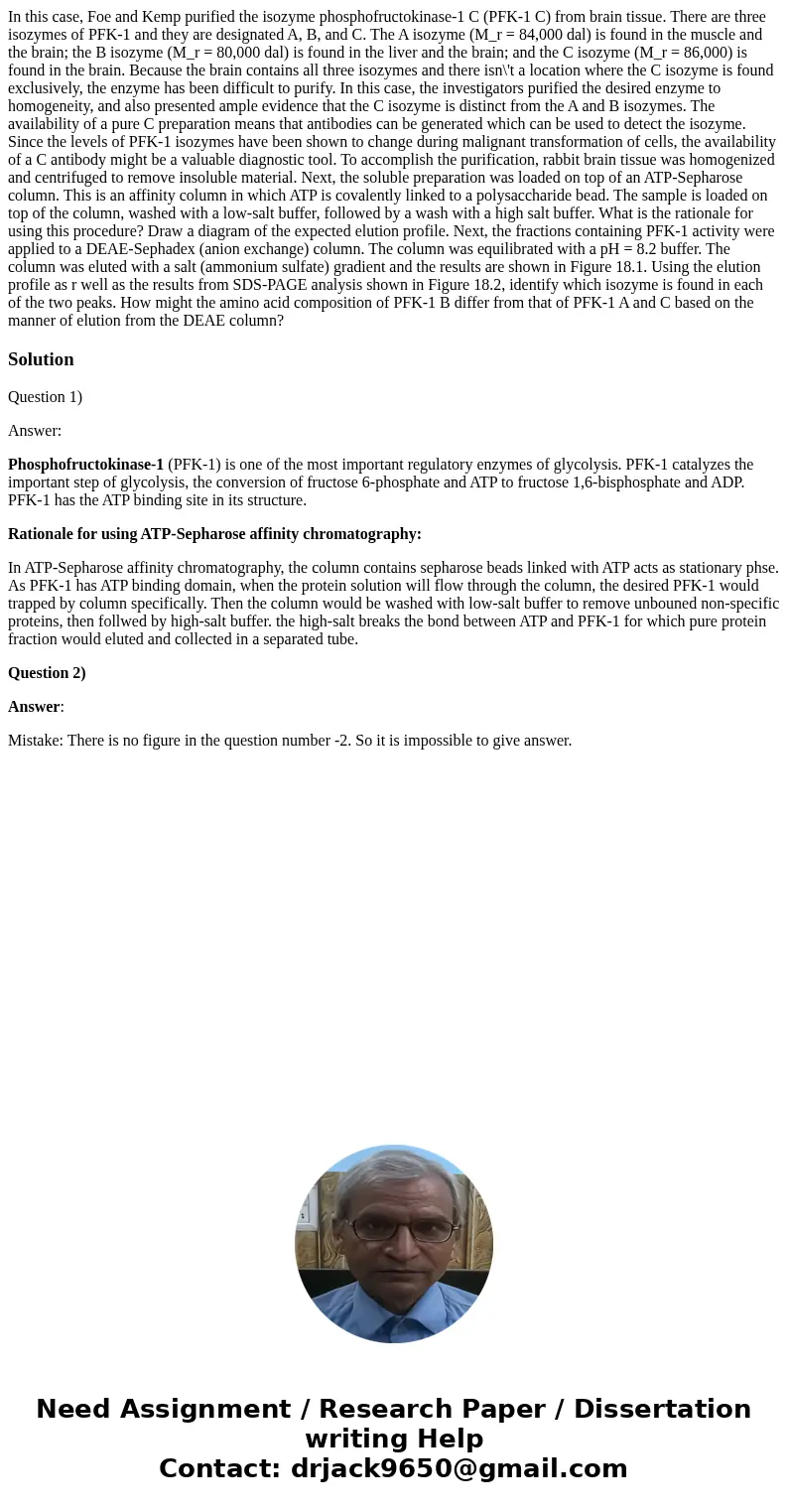In this case, Foe and Kemp purified the isozyme phosphofructokinase-1 C (PFK-1 C) from brain tissue. There are three isozymes of PFK-1 and they are designated A, B, and C. The A isozyme (M_r = 84,000 dal) is found in the muscle and the brain; the B isozyme (M_r = 80,000 dal) is found in the liver and the brain; and the C isozyme (M_r = 86,000) is found in the brain. Because the brain contains all three isozymes and there isn\'t a location where the C isozyme is found exclusively, the enzyme has been difficult to purify. In this case, the investigators purified the desired enzyme to homogeneity, and also presented ample evidence that the C isozyme is distinct from the A and B isozymes. The availability of a pure C preparation means that antibodies can be generated which can be used to detect the isozyme. Since the levels of PFK-1 isozymes have been shown to change during malignant transformation of cells, the availability of a C antibody might be a valuable diagnostic tool. To accomplish the purification, rabbit brain tissue was homogenized and centrifuged to remove insoluble material. Next, the soluble preparation was loaded on top of an ATP-Sepharose column. This is an affinity column in which ATP is covalently linked to a polysaccharide bead. The sample is loaded on top of the column, washed with a low-salt buffer, followed by a wash with a high salt buffer. What is the rationale for using this procedure? Draw a diagram of the expected elution profile. Next, the fractions containing PFK-1 activity were applied to a DEAE-Sephadex (anion exchange) column. The column was equilibrated with a pH = 8.2 buffer. The column was eluted with a salt (ammonium sulfate) gradient and the results are shown in Figure 18.1. Using the elution profile as r well as the results from SDS-PAGE analysis shown in Figure 18.2, identify which isozyme is found in each of the two peaks. How might the amino acid composition of PFK-1 B differ from that of PFK-1 A and C based on the manner of elution from the DEAE column?
Question 1)
Answer:
Phosphofructokinase-1 (PFK-1) is one of the most important regulatory enzymes of glycolysis. PFK-1 catalyzes the important step of glycolysis, the conversion of fructose 6-phosphate and ATP to fructose 1,6-bisphosphate and ADP. PFK-1 has the ATP binding site in its structure.
Rationale for using ATP-Sepharose affinity chromatography:
In ATP-Sepharose affinity chromatography, the column contains sepharose beads linked with ATP acts as stationary phse. As PFK-1 has ATP binding domain, when the protein solution will flow through the column, the desired PFK-1 would trapped by column specifically. Then the column would be washed with low-salt buffer to remove unbouned non-specific proteins, then follwed by high-salt buffer. the high-salt breaks the bond between ATP and PFK-1 for which pure protein fraction would eluted and collected in a separated tube.
Question 2)
Answer:
Mistake: There is no figure in the question number -2. So it is impossible to give answer.

 Homework Sourse
Homework Sourse